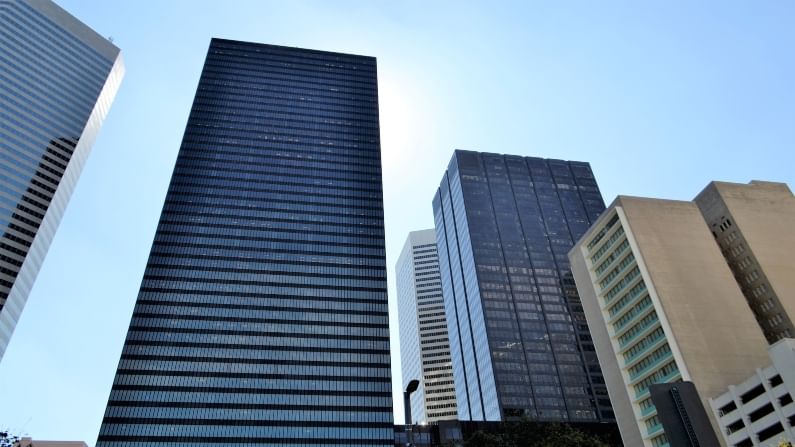Commercial real estate: An important investment avenue in the coming years
Indian commercial real estate has always been a highlighted sector for many investors in and around the world

The second wave of Covid-19 is different from the first one. There was a lot of uncertainty last year as everyone was battling the unknown but now they have personally experienced the pandemic and the lockdown along with its impact on health, family, friends, jobs, and businesses at least once.
But, this period also witnessed several new investors jumping on to the bandwagon of equity markets. According to The Securities and Exchange Board of India (Sebi) data, new demat account additions rose to an all-time high of 10.7 million between April 2020 and January 2021. In FY21, retail investors flocked to stocks trading for a quick buck but market volatility and risks has been a concern for many as they are worried about the safety of their investments. People have started investing to build a stable future and to survive the monetary disruptions.
The preference for Real Estate as an asset class had also reached pre-Covid levels vis-à-vis the lockdown period last year when we saw a dip due to the-then prevailing uncertainties as per a CII-ANAROCK Covid-19 Sentiment Survey. Commercial Real Estate was an avenue that many retail investors eyed but could not reach due to several barriers involved mainly large ticket sizes and lack of awareness, but now things are changing with new age technology enabled platforms offering fractional ownership of CRE which is changing the game in the real estate space.
One of the barriers perceived by investors while investing in commercial properties is the large ticket size required for investing. Another barrier that investors face is the complexity of managing the property with multiple tenants and also selecting the right property to invest in for stable rental incomes. These problems are now being solved by new age tech enabled platforms. These platforms help in selecting the right kind of assets along with end to end management of the properties. They also allow fractional ownership which means that the financial challenge faced by retail investors to enter this market, is being tackled. Fractional ownership of CRE is similar to owning a share of a company but with added benefits of monthly stable income.
Indian commercial real estate has always been a highlighted sector for many investors in and around the world. The setup of large commercial firms and MNCs has paved the way for investors to invest in rent yielding CRE and expect high gains in return. Due to a stable rental income flow every month (8-10% yields) and an appreciation potential (17%-25% IRR) investors are now taking a keen interest to this alternative asset class.
In spite of the pandemic, the office segment has seen investments of $3.1 billion in 2020 compared to $2.8 billion investments in 2019, as per the data from ‘India Real Estate Outlook, A Growth Cycle’, report by Jones Lang LaSalle (JLL).
Benefits of having CRE in your investment portfolio are:
Recurring Rental income
CRE is one of the few assets that provide stable regular monthly income to the investors from the first month of investment itself. Most multinationals and Indian corporates lease commercial properties that pay rent in advance at the beginning of every month.
High rental yield
CRE provides 8%-10% rental yield with stable and predictable cash flow. This depends on the quality and location the asset. The rental yield is higher than fixed deposits and at par with AAA-rated bonds issued by blue-chip companies.
Capital Appreciation
In a developing country such as India, the capital appreciation in commercial real estate is an additional benefit in addition to the 8%-10% rental yield. Factoring in the high rental yield and the annual appreciation, investors can earn a 17%-25% IRR. According to a Colliers International report, the commercial real estate sector has witnessed an increase in leasing activity from 41.6 million square feet to 58.6 million square feet at a compound annual growth rate (CAGR) of 12% over the past three years.
Capital Preservation
A hard asset is a tangible or physical item or object of worth that is owned by an individual or a corporation. In a market with uncertainty, investors have gravitated towards hard assets such as real estate. Their chief appeal is that the downside is limited as the bottomed-out price is set by the government as a “ready reckoner” or “circle rate”. Real Estate is a hard asset that preserves capital and prevents loss in a portfolio. Real estate has traditionally been one of the preferred options to hedge against increasing inflationary pressures. If an investor’s portfolio is primarily composed of only intangible assets, in uncertain market scenarios, the investor may face significant volatility in their holdings.
Commercial real estate adds a facelift to an investor’s portfolio making it risk averse and high return which is what most investors are looking for. A truly diversified portfolio goes beyond stocks and ETF’s. The steady nature of CRE has now made it one of the most preferred asset class among retail investors.
(The author is founder and CEO, MYRE Capital. Views expressed are personal)